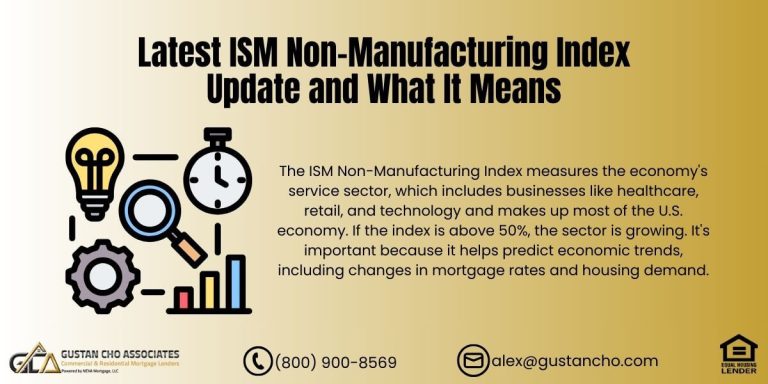The Mortgage Process After the Conditional Approval: What Happens Next?
The mortgage process after the conditional approval is one of the most important steps before closing on your home. If you’ve reached this stage, congratulations! However, you’re not clear just yet. Before you receive your clear to close (CTC), you must satisfy the conditions set by the underwriter.
Many borrowers are unsure about what happens after conditional approval. How long does it take? What documents do you need? What can delay the process? This guide will walk you through everything you need about moving from conditional approval to closing so you can get the keys to your new home—stress-free.
Mortgage Process After the Conditional Approval: What Is Conditional Approval?
Conditional approval means the lender has reviewed your loan application and decided you meet the basic requirements. However, the underwriter needs more information before giving final approval. Common conditions include:
- Updated income documents (pay stubs, tax returns)
- Explanation letters for credit inquiries or bank deposits
- Proof of reserves (savings, investments)
- Homeowners insurance policy
- Verification of employment
- Finalized home appraisal
Until these conditions are cleared, your loan cannot move forward to closing.
You’re One Step Closer! Complete the Final Steps After Conditional Approval
Apply For A Mortgage Loan Today!
Reason For Delays in the Mortgage Process
The number one reason for borrowers getting a last-minute mortgage denial or stress during the mortgage process is due to not being properly qualified by the loan officer. Every loan officer has their own ways of qualifying and pre-approving mortgage borrowers. Some loan officers are more thorough than others
Other loan officers will just issue a pre-approval letter after talking to the borrower even without running credit.
This type of pre-approval letter is a sign of potential disaster waiting to happen. Other reasons for last-minute loan denials and/or stress during the mortgage process is submitting a file to underwriting without the file being complete. This practice can often lead to stress during the mortgage process and no doubt signals delays in getting conditional approval and clear to close.
How Long Does It Take to Get a Clear to Close?
The timeline for receiving a clear to close depends on how quickly you and your loan team satisfy the lender’s conditions. On average, the mortgage process after the conditional approval takes 3 to 7 days—but delays can happen.
What Can Speed Up the Process?
- Respond Quickly—This means you should submit any documents they ask for as soon as possible. The faster you send in what they need, the quicker you can move forward in the mortgage process. This helps ensure everything stays on track so you can buy your new home.
- Double-Check Everything – look at your papers carefully. Make sure they are complete, easy to read, and have the latest information. This will help keep your mortgage process moving smoothly.
- Avoid Financial Changes – Do not apply for new credit, change jobs, or move money between accounts without consulting your lender.
Steps in the Mortgage Process After the Conditional Approval
1. Satisfying Underwriting Conditions
Your loan officer and mortgage processor will work with you to gather the required documents. This is a key part of the mortgage process after the conditional approval.
Tip: If an underwriter requests a letter of explanation, keep it short and to the point. Simple answers can help avoid more questions and delays, making the process easier and faster. Overcomplicated explanations can lead to more questions and delays.
2. Final Underwriting Review
After you get conditional approval for your mortgage, the next step is the final underwriting review. This is where your lender checks everything one last time. They will review your paperwork and ensure all the conditions you were asked to meet are done. This review usually takes about 24 to 48 hours, just one to two days.
Tip: Remember, the underwriters might still ask for a few more things before they say you can close on your loan. So, it’s good to stay patient during this time.
3. Receiving the Closing Disclosure (CD)
When your loan is ready to be finished, the lender will give you a document called Closing Disclosure (CD) at least three days before the closing day. This document has important information, including:
- Your final loan terms
- Interest rate
- Monthly payment
- Closing costs
Tip: Check your Closing Disclosure against the Loan Estimate you received earlier. This is important to make sure everything matches and you understand your financial obligations. If you notice any differences or have questions, reach out to your loan officer right away. They are there to help you with the next steps in your mortgage process.
4. Closing Day – Signing the Final Documents
The closing day is the final step of the mortgage process after the conditional approval. This is when you sign the important papers to complete your loan. Here’s what you need to bring:
- A government-issued ID
- Certified funds for closing costs (if required)
- Any last-minute documents requested by your lender
Once signed, the lender will fund the loan, and you will receive the keys to your new home.
What Happens After Conditional Approval?
Apply For A Mortgage Loan Today and reach on Final Steps to Closing!
Common Delays in the Mortgage Process After the Conditional Approval
Even though your loan is conditionally approved, things can still go wrong. Here are the top reasons for delays and how to avoid them:
Missing or Incorrect Documents
After you get conditional approval for your mortgage, it’s very important to make sure all your documents are correct. This means you should look carefully at every page before you send anything in. Missing or wrong documents can slow down your mortgage process and cause problems. So, take your time to double-check everything to keep things moving smoothly.
Large Bank Deposits
You need to take a few important steps regarding large bank deposits. If you have any deposits that are not from your paycheck, it’s very important to keep track of them. You must show where that money came from and explain it clearly. This helps the bank understand your finances better. Remember, organizing and providing the right documents can make your mortgage process smoother.
New Debt or Credit Inquiries
When you go through the mortgage process after the conditional approval, it’s important to be careful with your money. One big thing to remember is to avoid new debt or credit inquiries. You should not make big purchases or apply for new credit cards. If you get new loans or credit, it could make it harder to get your mortgage. So, focus on keeping your finances steady until your mortgage is complete.
Employment Changes
If you change jobs, your lender, the bank or company giving you the loan, will need to check your income again. This can cause delays in your loan process, so it’s best to keep your job until everything is finished. Keeping your job the same helps the process go more smoothly!
💡 Solution: Work closely with your loan officer at Gustan Cho Associates, who will help you navigate any last-minute issues when going through the mortgage process after the conditional approval.
Why Choose Gustan Cho Associates for Your Mortgage?
At Gustan Cho Associates, we focus on helping people close their loans quickly. Once you get a conditional approval, there are steps to follow in the mortgage process after the conditional approval. We are also experts in Non-QM and Alternative Financing Loan Programs. We guide you through these steps so you know what to expect. This is why homeowners trust us to help them reach the finish line!
- No Lender Overlays – We approve loans that other lenders reject.
- Fast Processing – Many of our clients clear to close in 2 weeks or less.
- Available 7 Days a Week – We work around your schedule to close your loan on time.
- Expert Guidance – Our team helps you navigate tricky underwriting conditions to avoid delays.
Ready to get your mortgage approved and move into your dream home? Contact Gustan Cho Associates today at 800-900-8569 or email gcho@gustancho.com.
Final Thoughts
The mortgage process after the conditional approval is the final stretch before you officially become a homeowner. By responding to conditions quickly, maintaining financial stability, and working with an experienced mortgage team like Gustan Cho Associates, you can avoid delays and close your home smoothly.
Frequently Asked Questions About the Mortgage Process After the Conditional Approval:
Q: What Does Conditional Approval Mean in the Mortgage Process?
A: Conditional approval means the lender has reviewed your loan application and confirmed that you meet the basic requirements. However, you still need to provide more documents before final approval. This is a key step in the mortgage process after the conditional approval before moving toward closing.
Q: How Long Does the Mortgage Process Take After the Conditional Approval?
A: The mortgage process after the conditional approval typically takes 3 to 7 days, depending on how quickly you provide the requested documents and how fast the underwriter reviews them. Delays can happen if documents are missing or need further verification.
Q: What Documents do I Need to Submit After Conditional Approval?
A: Your lender may ask for updated income documents (pay stubs, tax returns), proof of assets, bank statements, employment verification, and an updated homeowners insurance policy. Providing complete and clear documents can help speed up the mortgage process after the conditional approval.
Q: Can My Mortgage be Denied After Conditional Approval?
A: Yes, if you fail to meet the conditions set by the underwriter, make major financial changes (like taking on new debt), or change your employment status, your loan could be denied. It’s important to maintain your financial stability throughout the mortgage process after the conditional approval.
Q: Will My Credit be Checked Again Before Closing?
A: Most lenders perform a final credit check before issuing a clear-to-close (CTC). To prevent any last-minute issues, avoid applying for new credit, making large purchases, or taking on new loans while you are in the mortgage process after the conditional approval.
Q: What Happens After I Submit All the Conditions?
A: Once you submit all required documents, your lender will conduct a final underwriting review. If everything is complete and meets guidelines, they will issue the clear to close, which means your loan is ready for closing day. This is the final step in the mortgage process after the conditional approval.
Q: What Can Cause Delays in Getting a Clear-to-Close?
A: Common reasons for delays include missing or incorrect documents, large unexplained bank deposits, new debt, changes in employment, or last-minute conditions from the underwriter. Working closely with your loan officer can help you move smoothly through the mortgage process after the conditional approval.
Q: When Will I Receive My Closing Disclosure (CD)?
A: You will receive your Closing Disclosure (CD) three days before closing. This document outlines your final loan terms, monthly payment, interest rate, and closing costs. Please review it carefully and ask your lender about any discrepancies to avoid surprises in the mortgage process after the conditional approval.
Q: Can I Switch Lenders After Getting Conditional Approval?
A: Yes, but switching lenders at this stage can delay your closing because you must restart the underwriting process. If you’re unhappy with your lender, talk to Gustan Cho Associates, who can help you navigate the mortgage process after the conditional approval quickly and smoothly.
Q: How Can I Make Sure My Loan Gets Approved Without Delays?
A: The best way to ensure a smooth mortgage process after the conditional approval is to respond quickly to document requests, avoid financial changes, review all paperwork carefully, and stay in close contact with your loan officer. Gustan Cho Associates specializes in fast approvals and guiding borrowers through this process without stress.
This blog about “Mortgage Process After The Conditional Approval” was updated on February 24th, 2025.
Need Help with the Final Steps? Get Personalized Mortgage Guidance Now!
Apply For A Mortgage Loan Today!









